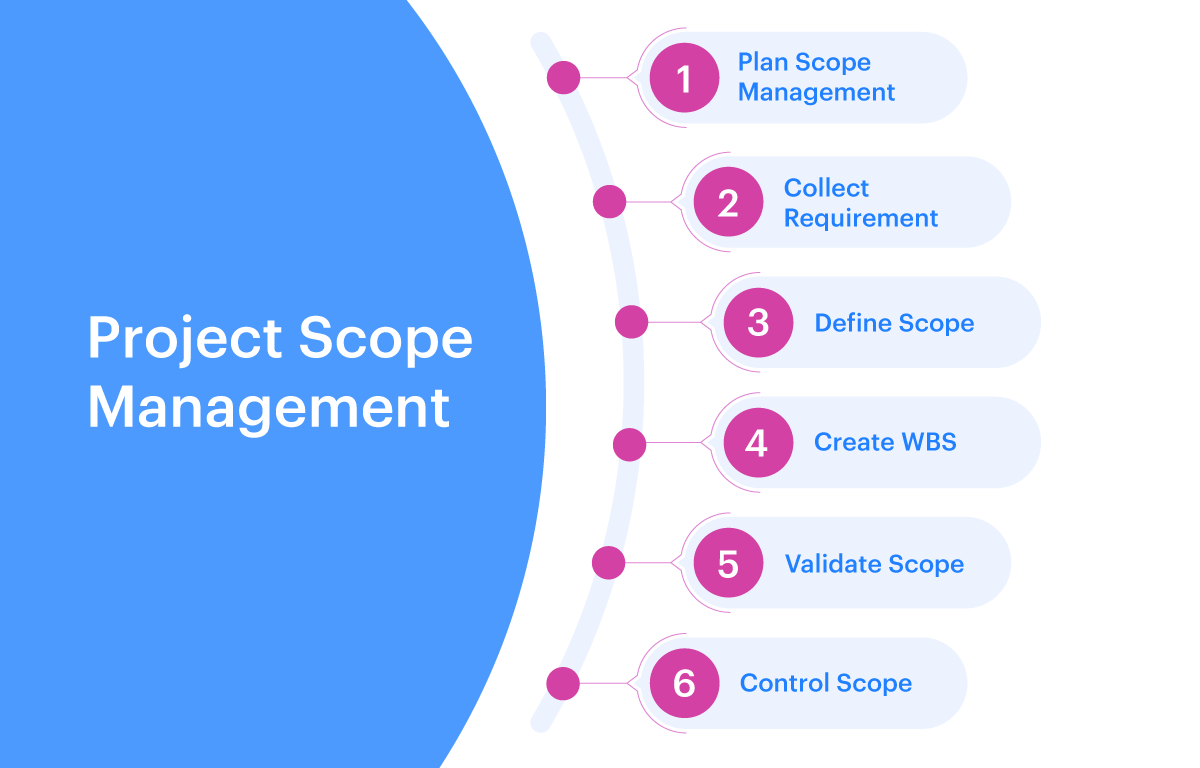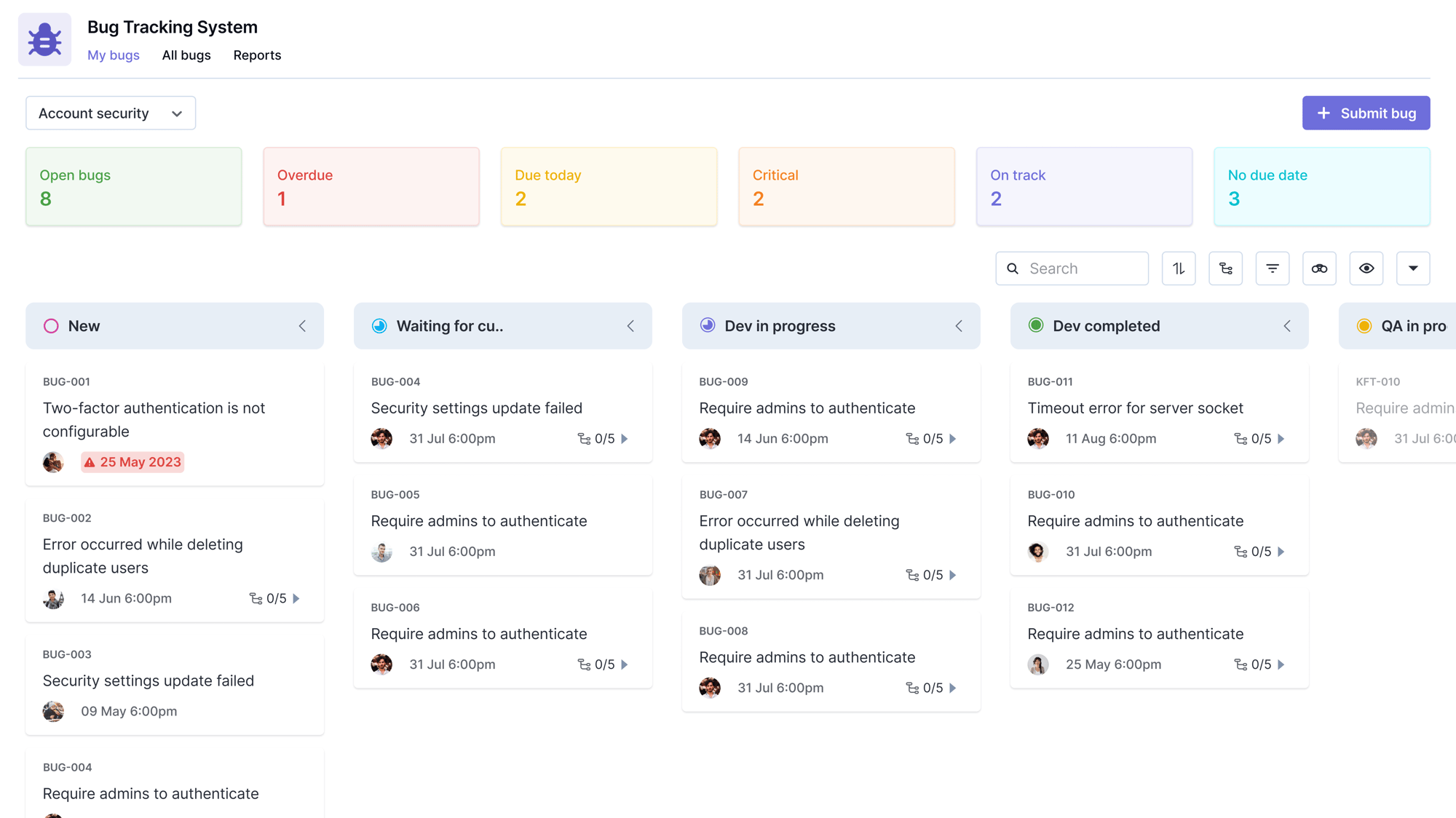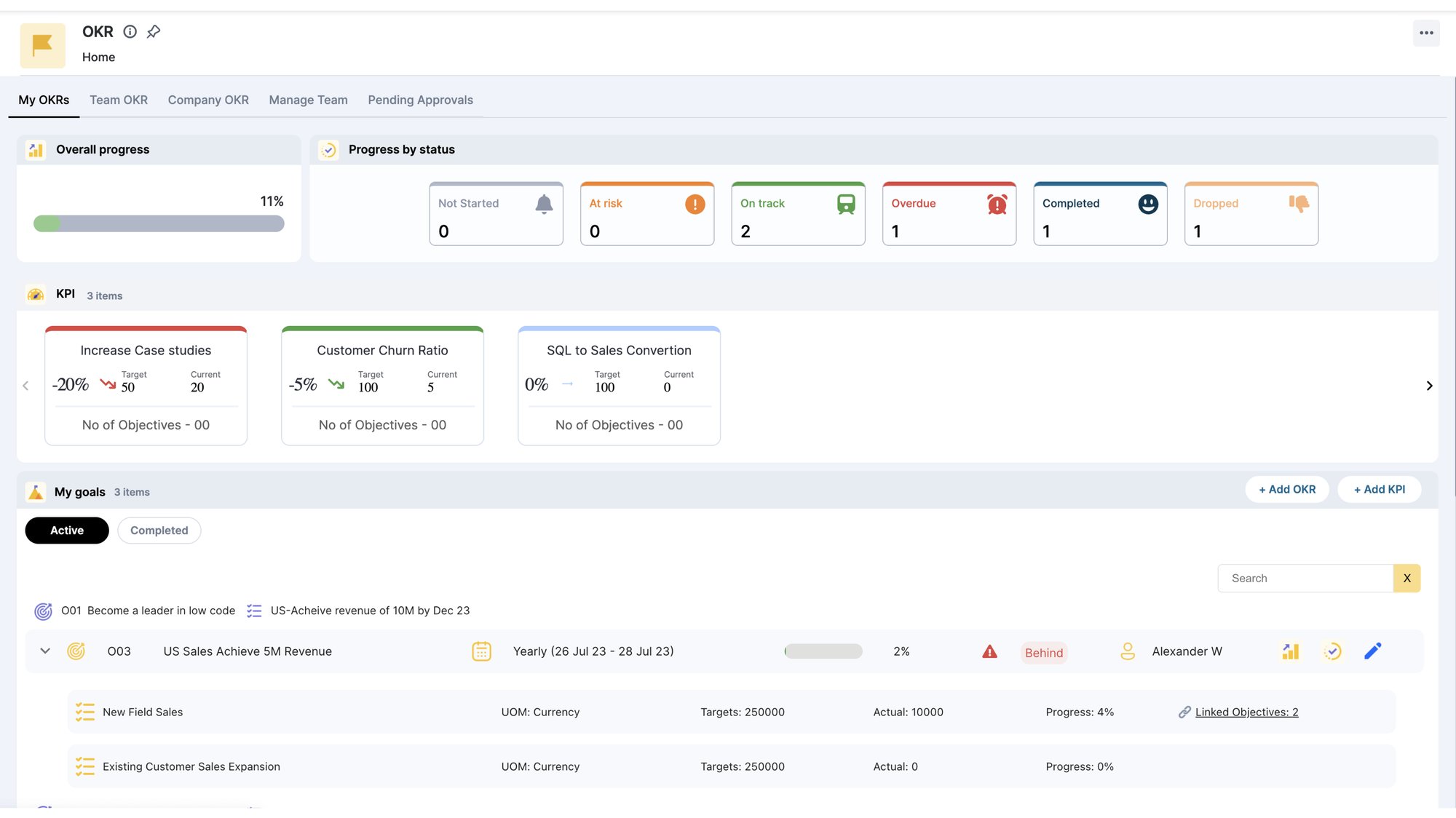It’s every project manager’s dream that the project goes on smoothly from initiation to completion, without delays and exceeding budgets. But, that rarely happens in reality.
Even if you discuss and plan out all the details in advance with all the project stakeholders involved, there’s always something that changes the scope of the project during its course. In fact, scope creep is a huge concern for project managers, affecting 52% of the projects.
By managing the scope of the project, you can document everything required to achieve the project goal and avoid issues like scope creep.
What is project scope management?
Project scope management is a process that helps in determining and documenting the list of all the project goals, tasks, deliverables, deadlines, and budgets as a part of the planning process. In project management, it is common for a big project to have modifications along the way.
With the scope in the project management defined right in the beginning, it becomes much easier for project teams to manage and make the required changes.
Importance of project scope management
For a project manager, managing the expectations of the stakeholders and clients is one of the most challenging tasks. With a definite project scope, managers can easily stay on track and ensure that all the deadlines are being followed throughout the project life cycle.
A well-defined project scope management helps avoid common issues like:
- Constantly changing requirements
- Pivoting the project direction when you are already mid-way
- Realizing that the final outcome isn’t what was expected
- Going over the discussed budget
- Falling behind the project deadlines
Effective project scope management gives a clear idea about the time, labor, and cost involved in the project. It helps to distinguish between what is needed and what isn’t needed for accomplishing the project. Scope in project management also establishes the control factors of the project to address elements that might change during the project life cycle.
See how Kissflow delivers the fastest time-to-value in the market
How is the project scope defined?
Project scope is a part of the project planning process that documents specific goals, deliverables, features, and budgets. The scope document details the list of activities for the successful completion of the project.
The scope is defined by understanding the project requirements and the client’s expectations. The scope statement usually contains,
- project objectives
- project deliverables
- exclusions
- project constraints and
- project assumptions.

Want to learn project management but put off by jargon?
Learn what's important in the simplest ebook for non-project managers.
Download NowScope statement in project management
The project’s scope statement is also called its scope document or statement of work. The project scope statement
- details all the boundaries of the project while also establishing the responsibilities of the team,
- defines all the procedures that need to be followed for verifying and approving the finished work, and,
- gives team members a definitive guideline for making project-related decisions.
When documenting the scope of a project, team members and stakeholders have to be as specific as possible to avoid scope creep, a situation where some parts of the project end up taking more time and effort than initially discussed due to miscommunication or poor planning.
With effective project management, teams are able to ensure that the project is finished on deadline, a proper project communication plan is done, and the final product aligns with the initial requirements.
Project scope management process
Let’s discuss the six processes involved in accurately identifying the project scope management:

1. Planning scope management
In the first process in project scope management, you create a scope plan document that you can refer to in the later stages. The document mainly helps in defining, managing, validating, and controlling the project’s scope.
It includes:
- Detailed project scope statement
- Breakdown of all the project requirements
- Expected project deliverables
- Project change control process
The document doesn’t have to be very detailed, it just has to fit the purpose. You can also use a previous project’s scope management plan as a reference for this.
2. Collecting requirements
The next step is to work out stakeholder requirements and expectations. You will be required to document all the project requirements, expectations, budgets, and deliverables through interviews, surveys, and focus groups.
This is a rather important step because more often than not, stakeholders can have unrealistic requirements or expectations and the project managers would be required to step in to find a solution that is acceptable by everyone from avoiding project delays.
At the end of the collection requirements stage, you should have the following:
- Functional as well as non-functional requirements
- Stakeholder requirements
- Business requirements
- Support and training requirements
- Project requirements
3. Defining the scope
At this step, you need to turn your requirements into a well-detailed description of the service or product that you are trying to deliver through the project. You will then have a project scope statement that you can then refer to throughout your project.
While it is important to list what is in the scope of the project, it is just as important to note down what is out of the project scope. Any kind of inclusions to the scope would then have to go through the entire change control process to ensure the team is only working on things that they are supposed to work on.
With a defined scope, you get a reference point for your project team and anyone else involved. In case there is something that is not involved in the scope, it doesn’t need to be completed by the team.
4. Making a project breakdown structure
A project breakdown structure is a document that breaks down all the work which needs to be done in the project and then assigns all the tasks to the team members. It lists the deliverables that need to be completed and their respective deadlines as well.
You can use project management software for this step of the process to assign and prioritize project tasks which will make it easier to track the entire progress of the project and avoid any unnecessary bottlenecks.
5. Validating scope
In this step, the scope and deliverables that you have recorded need to be sent to project executives and stakeholders to get the necessary approvals. Scope validation needs to be done before starting the project to ensure that if something goes wrong then it is easy to find where it went wrong.
6. Controlling scope
Project managers need to ensure that as the project begins, it always stays within the defined scope. In case there are some things that need to change, then the proper change control process should be followed.
Discover how Kissflow's low-code platform helps you achieve faster time-to-market - Schedule Your Free Demo
5 Tips for an effective project scope management
- Ensure to create a Work Breakdown Structure (WBS) as it will provide a breakdown of the scope statement into smaller, more manageable parcels.
- To avoid unnecessary work and stress, avoid ambiguity in your scope. Define it as clearly as possible.
- Make the process of defining scope a collaborative process to prevent misinterpretations of requirements. You can use project collaboration tools to improve effective communication between project teams.
- Ensure that the scope document is not altered during project execution to avoid any increase in scope beyond what was initially discussed.
- Finally, take your time to consult all relevant stakeholders and define the project scope, as it cannot change once finalized.
Closing Thoughts
Setting a defined project scope allows teams to manage their entire work in a streamlined way. With the help of project management software like Kissflow Project, an effective project scope helps start the project on the right foot and makes sure it is delivered in a timely manner and within budget while meeting the end-user expectations.
Kissflow Project
- is simple, friendly, and intuitive to use,
- frees you from constantly tracking tasks and teammates,
- offers multiple views to visualize your projects
- provides “Done”, “In-Progress”, and “On Hold” states for clarity on project status,
- gives you access to powerful reports to make data-driven decisions, and
- reminds you when tasks near their deadlines.
There’s a whole lot more to Kissflow Project. Sign up today to get acquainted with its simple yet powerful project management capabilities!
Explore how Kissflow platform can streamline your project management processes.
Your search for Project Management has landed you here. Wondering why?
As a user, you'll experience the full value of Kissflow by implementing it across departments for diverse use cases rather than just addressing isolated needs like a project management tool for a single team or department.
Process Owners, Process Heads, and Process Managers must ensure smooth and efficient workflows. Automating processes with a low-code platform enhances agility and accuracy. Discover how Kissflow helps process owners.

.png?width=2000&name=admin%20dashboard%20(2).png)






